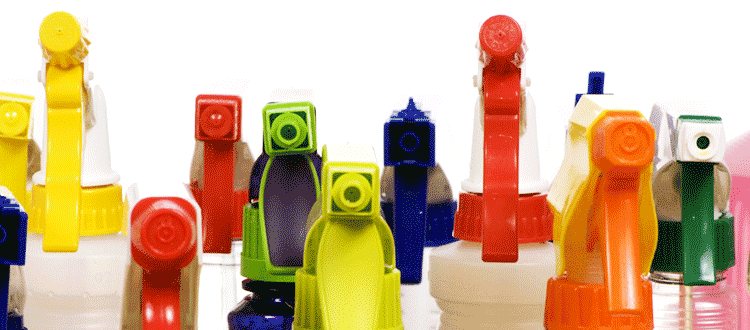Cleaning Product Companies Starting to Come Clean on Chemical Safety
 |
| Sarada Tangirala Director of Corporate Accountability |
Last December, we released the Health First Roadmap, a guide for cleaning product companies to develop and disclose strong chemical safety programs that protect the public from harm. In just a few short months, we have already started to see some notable shifts in the cleaning products industry in how they are talking about and addressing chemical screening and product safety.
Why chemical safety in sustainability reporting is so important
Major companies typically address concerns related to the environment in their annual sustainability reports. These are beautifully-designed documents that offer information on the company’s environmental and social goals and progress. Sustainability reports are entirely voluntary, but there is an increasing demand among shareholders and public stakeholders that companies produce such reports.
Sustainability goals typically include measurable commitments to reduce energy use (or increase renewable energy use), greenhouse gas emissions, water consumption, and waste from operations. Very little attention is paid to chemicals management and safety, and few companies even have goals related to reducing the use of hazardous chemicals. Companies in other product sectors, such as apparel, electronics, and retail, have done more to address these concerns. Levi Strauss & Co., HP, Target and Walmart are all notable examples of major corporations with measurable goals around reducing certain chemicals of concern.
Until this year, no company in the cleaning products sector had reported on how they ensure the chemicals used in their products go through rigorous safety screening, apart from vague language.
SC Johnson sets itself apart with greater chemical screening criteria transparency
This is why SC Johnson’s latest sustainability report is a striking difference. Titled The Science Inside, the report offers a level of detail and specificity in its approach to chemical screening and safety that we have not seen before in a cleaning products company.
Unlike other sustainability or annual reports from other companies, this report centers around chemical screening compared to other sustainability categories like GHG emissions, water, and waste. The report makes clear that every ingredient used in an SCJ product goes through the process outlined, which is something WVE calls for in our Health First Roadmap because fragrance chemicals are often excluded or included only to a limited extent. SCJ lays out specific human health and environmental endpoints, including carcinogenicity, reproductive toxicity, persistence and bioaccumulation, and allergenicity among others. Not only that, the explanations of the ‘Acceptable,’ ‘Better,’ and ‘Best’ levels include authoritative agency categorizations that SCJ uses to make its own determinations, and in numerous cases, detailed thresholds are stated as well. We have long believed major cleaning product companies apply certain criteria such as these, but SC Johnson is the first company to make them clear and available to the public.
Just before this report came out, Procter & Gamble announced new sustainability goals that include more transparency around their safety science to be released later in 2018 (described on page 5 of its 2017 Citizenship Report). We hope to see greater specificity and clarity on how P&G ensures ingredient safety in their products as a result of these new goals.
Regulatory compliance as a bare minimum
Another change we are seeing is the acknowledgment by cleaning product companies that mere compliance with regulations is not seen as sufficient to ensure the safety of products. As outlined in our Health First Road Map, companies leading the industry will voluntarily going above and beyond what is required by law.
In their most recent report, SC Johnson states that they will “go beyond what’s regulated to do what’s right.” In March, RB (makers of Lysol and Airwick) released it latest detailed sustainability report, which echoes the same sentiment. “It is our corporate responsibility to deliver solutions in a way that meets needs while continuously assuring safety and improving environmental profile of our products. We recognize that standards are improving constantly and we can no longer remain satisfied that compliance with the law is a sufficient safeguard.” Similarly Church & Dwight’s newest report states: “Beyond compliance, in 2017 we continued our product sustainability journey with an ongoing program to eliminate materials that do not meet our own formulation standards, including developing more than 35 improved product reformulations.”
Consumers, namely women, are driving companies to come clean
Voluntary actions like these are a direct result of consumers—mostly women—demanding more transparency and accountability around ingredient use and safety. At a minimum, we want to see all cleaning product companies offering the same level of transparency in their chemical screening programs as SC Johnson is doing, so that we can start to compare companies on their specific standards and criteria. There’s more we would like to see all cleaning product companies disclose about their chemical screening programs, as we lay out in the Health First Roadmap, and we look forward to the cleaning product industry further demonstrating its leadership and commitment towards continuous improvement in product safety.




Thank you for your toxic chemicals awareness.